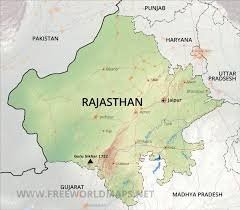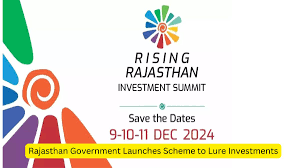New Developments in the Area of Rajasthan State: A Comprehensive Overview
Introduction to Rajasthan’s Geographical Landscape
Rajasthan, located in the northwestern part of India, is known for its vast desert landscapes, rich history, and vibrant culture. Covering approximately 342,239 square kilometers, it is the largest state in India by area. The state’s diverse geography includes the Thar Desert, numerous mountain ranges such as the Aravalli, and fertile plains. This geographical diversity significantly impacts the state’s economy, culture, and development strategies.
Economic Development and Infrastructure
In recent years, Rajasthan has seen substantial growth in infrastructure and economic development. The state’s government has undertaken numerous projects aimed at enhancing connectivity and fostering economic growth. Key initiatives include the development of highways, industrial corridors, and smart cities. These projects are designed to improve trade, boost tourism, and create employment opportunities.
Challenges Faced by Rajasthan
Despite its progress, Rajasthan faces several challenges, including water scarcity, desertification, and socio-economic disparities. The state’s arid climate makes water management a critical issue, with frequent droughts impacting agriculture and daily life. Additionally, there are ongoing efforts to address educational and healthcare disparities to ensure equitable development across the region.
Tourism and Cultural Heritage
Rajasthan is renowned for its cultural heritage and tourism potential. The state boasts a range of historical sites, including forts, palaces, and temples, which attract tourists from around the world. Key attractions include the Amber Fort, Udaipur’s City Palace, and the desert festivals held in Jaisalmer. Tourism plays a vital role in the state’s economy, providing income and employment to many residents.
Recent Government Initiatives
The Rajasthan government has recently introduced several initiatives aimed at enhancing the state’s development. These include policies to promote sustainable agriculture, improve water conservation, and boost the tourism sector. The government is also focusing on educational reforms to ensure better opportunities for the youth and promote skill development.

Why This News is Important
Impact on Governance and Policy Making
Understanding the developments in Rajasthan is crucial for grasping how regional governance and policy-making influence broader national trends. Rajasthan’s approach to economic and infrastructure development reflects strategies that can be adapted by other states. By studying these initiatives, students can gain insights into effective governance practices and policy impacts.
Relevance to Current Affairs and Exams
For students preparing for government exams, knowledge about regional developments like those in Rajasthan is essential. These topics often appear in current affairs sections of various competitive exams, including those for civil services, banking, and teaching positions. Awareness of regional issues and solutions demonstrates a comprehensive understanding of national and local governance.
Implications for Regional Development
The challenges and solutions in Rajasthan provide a case study for similar states facing issues like water scarcity and socio-economic disparities. Analyzing these developments helps students understand how states manage resources and plan for sustainable growth, which is crucial for positions in administration and policy-making.
Historical Context:
Background of Rajasthan’s Development
Rajasthan’s history is deeply intertwined with its geographical features and cultural heritage. Traditionally, the region was divided into several princely states, each with its own governance system. The merger of these states into a single entity post-independence laid the foundation for modern Rajasthan.
Historically, Rajasthan has faced numerous challenges, including frequent invasions and the harsh desert climate. However, the state’s rich cultural heritage and strategic location along ancient trade routes contributed to its economic and cultural significance. The post-independence era saw significant changes, including efforts to modernize infrastructure and improve living standards.
Government initiatives over the decades have focused on addressing the unique challenges faced by Rajasthan. The emphasis has been on enhancing water resources, developing infrastructure, and promoting tourism. These efforts are part of a broader strategy to ensure sustainable development and economic growth.
Key Takeaways from Recent Developments in Rajasthan
| Serial No. | Key Takeaway |
|---|---|
| 1 | Rajasthan is the largest state in India by area, with diverse geographical features impacting its development. |
| 2 | Recent government initiatives focus on improving infrastructure, boosting tourism, and addressing water scarcity. |
| 3 | The state faces challenges such as water scarcity and socio-economic disparities, impacting its overall development. |
| 4 | Rajasthan’s cultural heritage and tourism play a significant role in its economy, with many historical sites attracting global tourists. |
| 5 | Awareness of regional developments in Rajasthan is crucial for understanding national trends and preparing for government exams. |
Important FAQs for Students from this News
1. What are the main geographical features of Rajasthan?
Rajasthan is characterized by its vast desert landscapes, including the Thar Desert, and the Aravalli mountain range. It also features fertile plains and several major rivers, although water scarcity is a significant issue.
2. How has the Rajasthan government addressed infrastructure development?
The Rajasthan government has undertaken various infrastructure projects, including the development of highways, industrial corridors, and smart cities. These initiatives aim to improve connectivity, enhance trade, and boost tourism.
3. What are the primary challenges faced by Rajasthan?
Rajasthan faces challenges such as water scarcity, desertification, and socio-economic disparities. These issues impact agriculture, daily life, and overall development in the state.
4. How does tourism impact Rajasthan’s economy?
Tourism plays a crucial role in Rajasthan’s economy. The state is known for its historical sites, forts, palaces, and festivals, which attract international and domestic tourists, providing significant revenue and employment opportunities.
5. Why is it important for students to be aware of regional developments like those in Rajasthan?
Awareness of regional developments helps students understand governance and policy impacts on local and national levels. It is also crucial for competitive exams, as questions related to regional issues often appear in various government and civil service exams.
Some Important Current Affairs Links


















